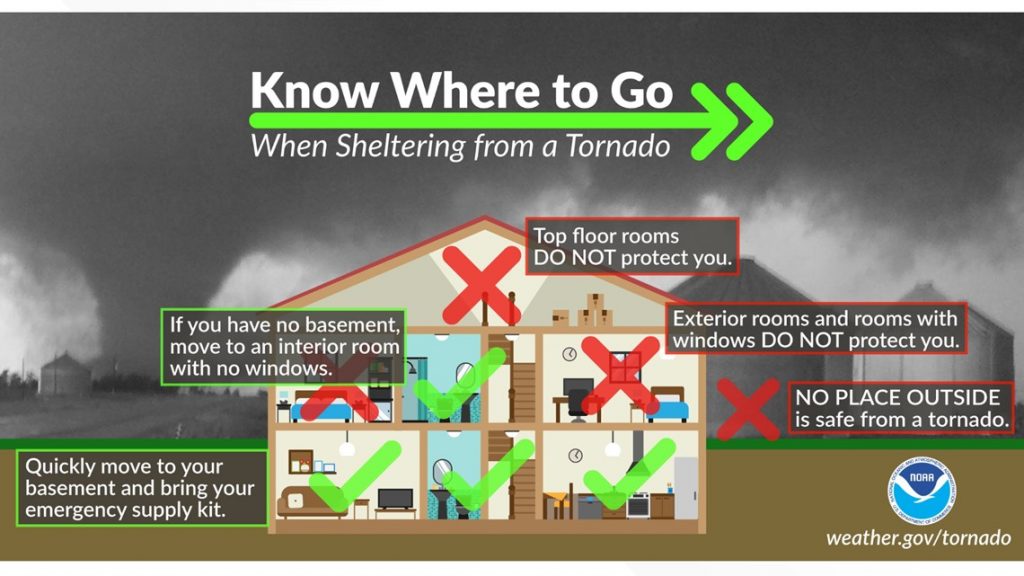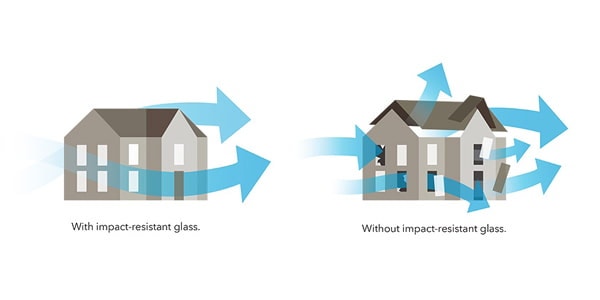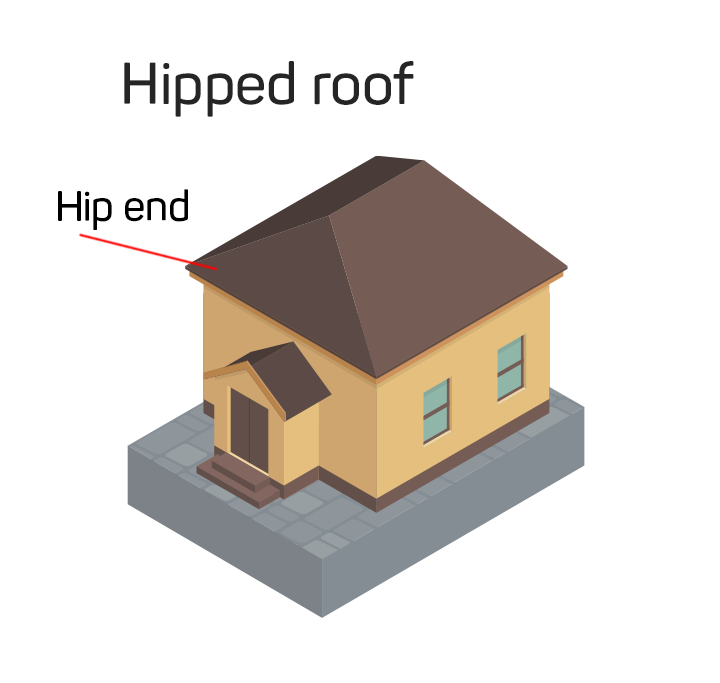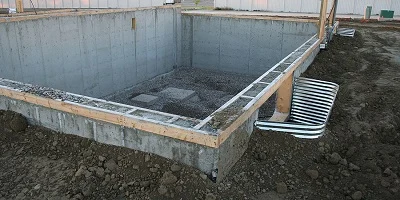Surviving the Storm: How to Build a Home That Defies Tornadoes & Hurricanes

Home strength by materials:

1.Reinforced concrete: Reinforced concrete is one of the most tornado-resistant materials due to its high strength and durability. The combination of concrete and embedded steel reinforcement provides excellent resistance to high winds and flying debris. Walls made of reinforced concrete should be at least 6 inches thick to provide adequate protection.

2. Steel: Steel is another strong material that can withstand the forces of a tornado. Steel structures, such as shipping containers or specially designed safe rooms, can provide a high level of protection when anchored properly to a concrete foundation.

3. Brick and masonry: While not as strong as reinforced concrete, brick and masonry structures can still offer some protection during a tornado. However, it’s important to note that unreinforced masonry can be vulnerable to collapse under extreme winds. Reinforced masonry, with steel reinforcements embedded in the mortar joints, provides a higher level of protection.

4, Wood: Wood structures are the most vulnerable to tornado damage due to their lightweight nature and susceptibility to flying debris. However, wood-framed homes can be strengthened with the use of hurricane clips, anchor bolts, and other connectors that help tie the structure together and improve its overall resistance to wind forces.
Rooms and Structures:

- Basements: Basements are one of the safest places to be during a tornado, as they are below ground level and surrounded by earth, which provides natural protection. The basement walls should be made of reinforced concrete or reinforced masonry for optimal protection. If possible, choose a corner of the basement away from windows and exterior walls.
- Interior rooms: Small, interior rooms on the lowest floor of a building, such as closets, bathrooms, or hallways, can provide some protection during a tornado. These rooms should be located away from exterior walls and windows. The smaller the room, the better, as it will have less space for potential debris to accumulate.
- Bathtubs: If you don’t have access to a basement or a small interior room, a bathtub can provide some protection. Bathtubs are typically made of sturdy materials like cast iron or steel, which can withstand some impact from debris. Lie in the bathtub and cover yourself with a thick blanket or mattress for added protection.
- Closets: A small, interior closet can be a good place to seek shelter during a tornado. Choose a closet on the lowest floor, away from exterior walls and windows. The closet should have a strong door frame and hinges to resist wind forces.
- Safe rooms: Specially designed safe rooms, built to FEMA guidelines, offer the highest level of protection during a tornado. These rooms are typically constructed with reinforced concrete or steel and are anchored securely to a concrete foundation. The walls, ceiling, and door are designed to withstand extreme wind speeds and flying debris.
- Doorways: While it is a common misconception that doorways are safe during a tornado, they do not provide significant protection unless they are part of a specially designed safe room. In fact, doorways can be dangerous due to the potential for flying debris and the lack of structural support in modern homes.
If you’re building a new home, here are some important considerations:
Continuous load path: Ensure that your home’s design incorporates a continuous load path, which means that all structural elements (roof, walls, and foundation) are properly connected to transfer wind forces down to the ground. This can be achieved through the use of metal connectors, anchor bolts, and reinforced concrete.

Impact-resistant windows and doors: Install impact-resistant windows and doors, which are designed to withstand high winds and flying debris. These may include laminated glass, reinforced frames, and sturdy hardware.

Reinforced garage doors: Garage doors are often a weak point in a home’s structure during a tornado. Install reinforced garage doors that are designed to withstand high winds, or consider eliminating the garage altogether and opting for a carport or detached garage.

Hip roof design: A hip roof (slopes on all four sides) is more aerodynamic and resistant to wind forces than a gable roof (slopes on two sides). If possible, incorporate a hip roof design with a 30-45 degree slope to minimize wind uplift forces.

Proper anchoring: Ensure that your home’s foundation is properly anchored to the ground using anchor bolts or other suitable methods. This helps prevent the structure from being lifted or shifted off its foundation during a tornado.
Minimize overhangs and projections: Reduce the size of roof overhangs, balconies, and other projections, as these can be vulnerable to wind forces and provide a pathway for wind to enter the structure.
Properly anchoring the roof to the walls is a critical aspect of creating a continuous load path and ensuring that your home can resist the high wind forces associated with tornadoes. The goal is to create a strong, uninterrupted connection from the roof to the walls and down to the foundation. Here are some recommendations for anchoring the roof to the walls:

- Hurricane clips or straps: Use hurricane clips or straps to connect the roof trusses or rafters to the top plate of the exterior walls. These metal connectors are designed to resist uplift forces and prevent the roof from being separated from the walls during high winds. Hurricane clips should be installed according to the manufacturer’s specifications and local building codes.
- Continuous roof sheathing: Use continuous roof sheathing, such as plywood or oriented strand board (OSB), to create a solid, uninterrupted surface that can distribute wind forces across the entire roof. The sheathing should be properly fastened to the roof trusses or rafters with ring-shank nails or screws.
- Roof-to-wall anchors: In addition to hurricane clips, consider using roof-to-wall anchors, which are heavy-duty metal connectors that tie the roof framing directly to the wall studs. These anchors provide a more robust connection and can further improve the roof’s resistance to uplift forces.
- Reinforced roof-to-wall connections: For added strength, consider using reinforced roof-to-wall connections, such as continuous steel straps or cables that run from the roof framing, down the exterior walls, and into the foundation. These continuous ties help transfer wind forces from the roof to the foundation, bypassing the potential weak points at the wall-to-foundation connection.
- Proper fastening: Ensure that all connections, including roof sheathing, hurricane clips, and anchors, are fastened using the appropriate fasteners (e.g., ring-shank nails or structural screws) and fastening patterns as specified by the manufacturer and local building codes.
- Gable end bracing: If your home has a gable roof, pay special attention to the gable end walls, as these are particularly vulnerable to wind forces. Install gable end bracing, such as diagonal braces or shear walls, to provide additional support and prevent the gable end from collapsing during a tornado.
- Professional installation: Have your roof-to-wall connections designed and installed by experienced professionals, such as licensed contractors or structural engineers, to ensure that they meet or exceed the requirements for your area’s wind loads and building codes.
When it comes to surviving a tornado, having a dedicated storm shelter or safe room built to FEMA guidelines is the best option. However, if you don’t have access to a shelter, there are still certain types of rooms, places, home designs, materials, and structures that can increase your chances of survival during a tornado.
- Basements: If your home has a basement, it is one of the safest places to be during a tornado. The below-ground location provides added protection from flying debris and the collapse of the structure above. Choose a corner of the basement away from windows and exterior walls. If possible, get under a sturdy piece of furniture like a table or workbench for added protection.
- Interior rooms: If you don’t have a basement, seek shelter in a small, interior room on the lowest floor of your home. Closets, bathrooms, and hallways are often good choices, as they are typically located away from exterior walls and have a smaller area that can be more easily reinforced. In a bathroom, the plumbing in the walls can provide additional structural support.
- Center of the house: The center of your home is usually the most structurally sound area, as it is furthest from the exterior walls that are more vulnerable to damage from high winds and flying debris.
- Rooms with no windows: Windows are weak points in your home’s structure and can easily shatter during a tornado, creating a dangerous situation with flying glass. Choose a room with no windows or the fewest windows possible.
- Manufactured homes: Manufactured homes, also known as mobile homes, are particularly vulnerable to tornadoes due to their lightweight construction and lack of a solid foundation. If you live in a manufactured home, it is crucial to have a separate storm shelter or evacuate to a sturdy building before the tornado hits.
- Concrete and brick structures: Homes made of concrete or brick are generally more resistant to tornado damage than those made of wood or other lightweight materials. The added weight and strength of these materials can help the structure withstand high winds and flying debris.
- Safe rooms: If you don’t have a basement or storm shelter, consider building or installing a safe room in your home. These rooms are specifically designed to withstand extreme winds and flying debris. They can be constructed from reinforced concrete, steel, or other materials and should be anchored securely to a solid foundation.
- Helmets and protective covering: Regardless of where you take shelter, protect your head and neck by wearing a helmet, such as a bicycle or motorcycle helmet. Cover your body with thick blankets, sleeping bags, or even a mattress to shield yourself from flying debris.
- Avoid certain areas: During a tornado, stay away from exterior walls, doors, and windows. Also, avoid rooms with large spans, such as gymnasiums, auditoriums, or warehouses, as the roof is more likely to collapse in these spaces.
- Community shelters: If your home does not have a suitable place to take shelter, familiarize yourself with community shelters in your area. These can include schools, public buildings, or designated storm shelters.
